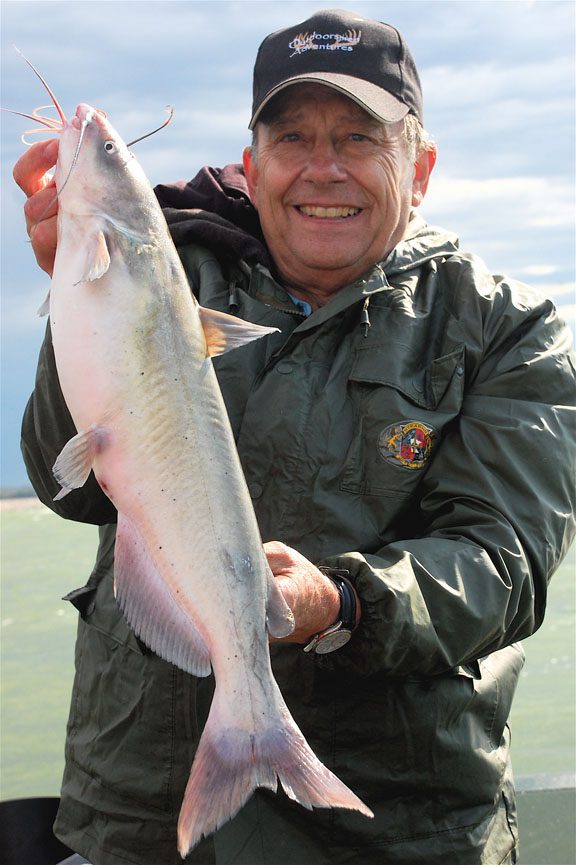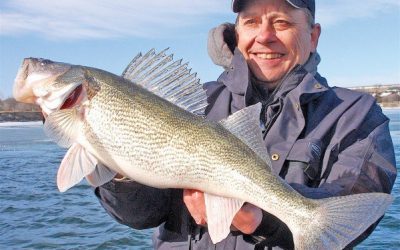Author with Red River with Guide Brad Durick, with one of the huge catfish they took in North Dakota. https://redrivercatfish.com
They may not be the prettiest fish in the world, but they’re great fighters and great eating.
Channel catfish inhabit most rivers, reservoirs and lakes and because of the strange baits, smelly stuff, a lot of anglers don’t fish for them.
Baits include chicken livers, stink baits, chicken liver, rough fish, minnows, shad, chubs, worms, frogs, grasshoppers, nightcrawlers, Gizzard shad, suckers, skipjack, herring, blood baits, crawfish, shrimp, pieces of cut-baits and cheese baits.
They can also be caught on Bullheads, and other gamefish, but like in Nebraska and some other states, the only game fish that can be used are Sunfish, Perch, Bluegill and other game fish that have to be come from water that leads into the water you’re fishing, so check your states fishing regulations to be sure if you’re safe to use them.
During the colder water time of the year, they’ll be deep, and with warmer water temps, they move up stream, you’ll find them hiding out in the current breaks, where to current is forced to go around those created by log jams, and other structure, allowing them to wait comfortably for their next meal to drift in.
Because of the snag infested locations they inhabit, you may want to use heaver equipment and to make sure your tackle is up to the test.
These heavier line for larger catfish, at least 65 # braided line or 30 # green monofilament line, a medium heavy rod, as channel catfish can grow to enormous weights, the largest in Nebraska, the largest was 41, lbs. 8 oz, in South Dakota 67 lbs. 8 oz. and in Iowa it’s 38 lbs. 2 oz.
Channel catfish have one of the most highly developed senses of taste, using the barbells(whiskers) on the outside of their mouth and the taste receptors (sensors) on the inside of their mouth, it’s said they can smell baits up to 15’ away, in flowing water, as the scent carries quite aways downstream, drawing cats upstream from greater distances.
For those anglers who use stink baits, the hook generally used is a colored plastic tube with holes punched up and down the body and a treble hook at the bottom, I use Sony’s Super Sticky stink bait, as it adheres to my bait longer.
There are numerous hook sizes available, depending on what catfish you’re after, with circle hooks, to be the most popular hook used by cat fishermen, other hooks used, depending on the weight of fish you’re targeting, require 5/0 to 7/0 hooks.
In those snag infested areas that channels live in, to keep from becoming hung up, some anglers use slip bobber rigs, allowing their bait to drift above the snags or weeds. They attach a small split shot or knot as a bobber stop, slip sinker just big enough to keep your float upright, with a hook baited with cut bait
No matter how you fish for cats, you’re going to have a fight on your hands and some excellent eating when you get home.





0 Comments